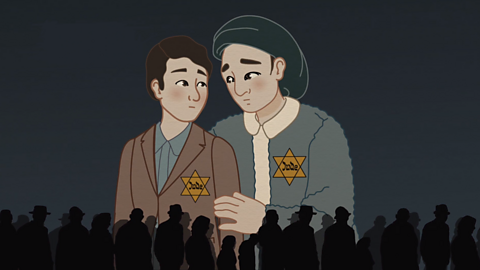Key points
When World War Two broke out in September 1939, Britain called upon countries from across the British Empire for help.
The contribution from people across the empire was crucial in helping Britain to defeat Nazi Germany.
Despite the importance of their role, those who had been recruited from the empire were not always treated equally.
Video about troops from the British Empire
Narrator:
During World War Two, Britain called on armed forces, workers and financial support from all over the British Empire. The troops were vital to the British war effort and Winston Churchill frequently mentioned them in his speeches. Here are three stories of people from three different places Australia, India and Trinidad, who fought or assisted the war effort.
In 1939, Florence Violet McKenzie set up the Women’s Emergency Signalling Corps in Sydney, Australia. They trained women to take over jobs in communication, while Australian men were away fighting in the war. Communication was a crucial part of the war effort, as it allowed messages to be sent to the armed forces who were fighting and spread important news around the world.
Florence Violet campaigned tirelessly to have our trainees accepted into the all-male Australian Air Force and Navy. By the end of the war there were almost 2,600 members in a newly named Women’s Royal Australian Naval Service. Florence was awarded an OBE after the war.
Jemadar Maula Dad Khan was part of a military animal transport company brought over to France from India. Some people in India were unhappy that their soldiers had volunteered to support the British war effort, as they wanted independence from the British Empire. Khan’s company was meant to provide support by moving supplies across rural France, but pretty soon they had to join the fighting.
Later they were evacuating France at Dunkirk when German shells began to fall all around them. Khan reorganised the soldiers and animals and got them off the road and led them safely to the beaches without loss. As a result he was awarded the Indian Distinguished Service Medal.
Ulric Cross was young and adventurous but frustrated by colonial rule at home in Trinidad. He wanted to help defeat Hitler and he thought joining the British RAF was a good way to help the war effort. As soon as he heard about the evacuation of Dunkirk, Ulric signed up and in 1941 he travelled to the UK to start his RAF training in Lincolnshire. He joined Bomber Command and flew as a navigator in 80 operational flights over Germany in a Mosquito fighter bomber. Ulric was awarded the British Distinguished Flying Cross in 1944.
People served in many capacities from all over the empire, while some were celebrated for their service during World War Two many others did not receive the recognition they deserved.
How many British Empire troops served during World War Two?
During World War Two, the contribution of troops from the British Empire was crucial.
The map below gives an idea of the number of soldiers who signed up to fight for Britain from several British Empire countries. Most of these troops were in the army, but some fought in the RAF, navy and local armed forces branches.
Empire troops before World War Two
World War Two was not the first time that Britain sought help from countries from across the British Empire. Many nations whose soldiers made a valuable contribution to the war effort from 1939 – 1945 had already fought alongside British troops during World War One.
During World War One, India made a particularly large contribution, with over 1.5 million Indian troops signing up to fight. Alongside these soldiers, Australia, New Zealand, Canada, Newfoundland and South Africa sent, between them, 1.3 million troops.
Soldiers from different parts of the British Empire fought alongside each other. For instance, troops from India and New Zealand went into battle together at Gallipoli, Turkey in 1915. Of the 3,000 Indian soldiers who fought at Gallipoli, 1,624 were killed.
In 1915, following the Battle of Neuve Chapelle in northern France, Khudadad Khan received the Victoria CrossThe highest military honour that can be given. Awarded to individuals for acts of bravery., a military medal awarded for exceptional bravery in combat. He was the first South Asian soldier to receive this honour.
India
When World War Two broke out, India was not self-governedA country in the British Empire that had its own elected government, who could make most of their own decisions and laws.. This meant that they were ruled directly by the British government, so the decision for them to join the war and fight with Britain was taken in London. Indian volunteers joined the British Indian Army. In September 1939 it had 250,000 men, but by the end of the war it had 2.5 million volunteer soldiers. Indian troops made a huge contribution to the war effort, winning 30 Victoria Cross medals for acts of bravery. 87,000 Indian soldiers were killed.
Indian troops fought on many fronts, including at North Africa, South East Asia, the invasion of Italy and the Middle East. 40,000 Indian servicemen also provided crucial support for the British Merchant NavyShips used to transport goods, rather than to fight..
Some in India argued that, in return for their support for Britain during the war, they should be granted their independence. This was rejected by the British government.
In 1943, there was a famine in Bengal. Up to 3 million people died from starvation and disease. There was anger about the lack of support from Britain. Some historians have argued that Churchill could have done more to divert food supplies to India, and that he chose to prioritise the lives of people in the UK and Europe over those of people in South Asia. Other historians disagree with this version of events. They argue that other factors contributed significantly to the Bengal Famine, such as the Japanese government cutting off rice supplies to Burma, and a shortage of ships due to the war.
What was the role of women in India in supporting the armed forces?
In 1942, an Indian Women’s Auxiliary Corps was created so that women could provide essential support services to the armed forces. Women over the age of 18 could volunteer, and by the end of the war, 11,500 women had volunteered to join the WAC. The Indian WAC fulfilled roles such as office administration, answering phone calls and sending messages. The main purpose of the WAC was to free up men to go and fight on the front line.

The Gurkhas
The Gurkhas, soldiers from what is now western Nepal, made a significant contribution to the British Indian Army. Gurkha troops fought in several different places, including Italy, Greece, North Africa, and the Far East. Over 110,000 soldiers served across 40 different battalions, with 30,000 either killed or wounded. Gurkha soldiers won 12 Victoria Cross medals for bravery, with five of these awarded posthumouslyAfter someone has died..
The Caribbean
Men from the Caribbean, sometimes also called the West IndiesA term first used during the period of European colonialism to refer to the islands of the Caribbean. It includes the modern-day countries of Barbados, Jamaica, Belize and Haiti, among several others., who joined the war effort were placed in their own Caribbean Regiment. This was formed in April 1944. The Caribbean Regiment had 10,000 volunteer troops. There were still racist attitudes in the British armed forces. A ban on Black people serving in the Royal Air Force (RAF) was lifted in World War Two, but this did not apply to the Royal Navy.
Many men from the Caribbean did join the Merchant Navy, but sailors from the British Empire were paid about one third of the wages that white sailors were paid.
It is estimated that approximately 600 Caribbean women travelled to Britain during World War Two to work in the Auxiliary Territorial Service. The role of these services was to provide administrative support to the armed forces, make deliveries and maintain military equipment.
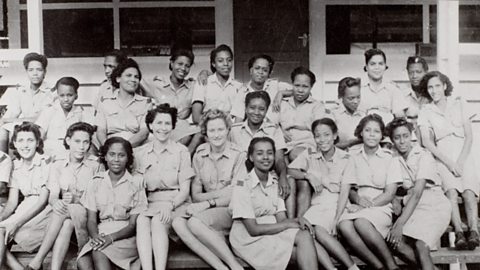
East and West Africa
British armed forces recruited men from East Africa in countries such as Kenya and Uganda. Pay rates fighting for Britain were significantly higher than people could earn in their regular work. 320,000 men in total were recruited from East Africa.
The British Army also recruited 200,000 men from West Africa. This included setting up an RAF base in Sierra Leone to search for submarines.
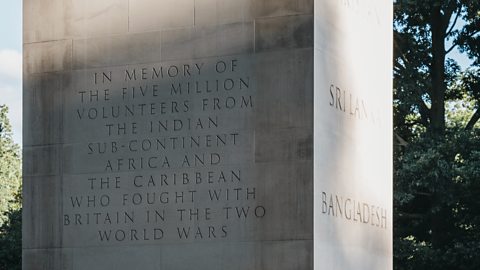
South Africa
There was some debate in South Africa about whether or not they should join the war. Anti-British politicians, including Prime Minister J.B.M. Hertzog, wanted to remain neutral in the war. This was because they did not want South Africa to be a part of the British Empire. They wanted the country to become a republicA country that is not governed by a monarch. Instead, the Head of State is usually elected by the citizens of the country, and generally known as a president.. Others, including deputy Prime Minister Jan Smuts, wanted South Africa to declare war on Nazi Germany, which they did on 6 September 1939.
The racist attitudes of the South African government towards Black South Africans meant that, initially, they would not allow these soldiers to fight on the front line. Instead, Black South Africans were only allowed to provide support and fulfil administrative roles.
By 1941, there were considerable shortages of soldiers and Black troops were called upon to serve in a wider range of roles, including those of transport drivers, dispatch riderA person who carries and delivers an urgent message, usually on a motorcycle. and medics.
Who was Corporal Lucas Majozi?
Corporal Lucas Majozi received a Distinguished Service Medal for his bravery during the Second Battle of El Alamein, Egypt, in 1942. Majozi was a stretcher bearer, which meant that he was responsible for carrying wounded soldiers away from the battlefield to receive medical care. Though he was injured himself, he worked throughout the night to carry injured troops to safety. Majozi is one of the few Black soldiers who was recognised for his contribution to World War Two, and his medal was the highest honour awarded to a Black South African serviceman during the conflict.
Australia
The Australian government declared war on Germany along with Britain in September 1939. They also declared war on Japan in 1941. At the start of the war, Australian troops travelled to fight with British troops in Europe, but when they went to war with Japan, most returned to fight the war in the Pacific. Australia also experienced some bombing raids by the Japanese air force.
Australian women played an important role in the war effort. In 1939, Florence Violet McKenzie set up the Women’s Emergency Signalling Corps (WESC). This organisation trained volunteer women to take over jobs in military communication, as so many men were away fighting on the front line. By the time war broke out, 120 women had been trained. The women of the WESC also later trained male members of the armed forces in communications, too.
Women in Australia also joined the Australian Women’s Land Army (AWLA), which was set up in July 1942. Members of the AWLA took up work on farms in areas where men were away fighting. By 1944, the AWLA had approximately 3,000 members.
New Zealand
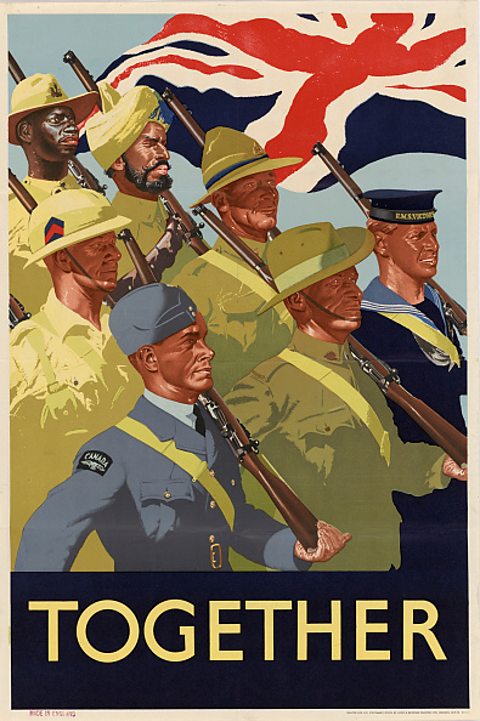
140,000 New Zealanders served abroad during World War Two. Unlike most countries in the empire, New Zealand was willing to allow its Navy and air force troops to be commanded by Britain. This meant many New Zealand airmen flew for the RAF. New Zealand also provided the RAF with 30 Wellington bombers for their use.
Large numbers of ≤—ƒÂ¥«∞˘æ±The indigenous, meaning native to a country prior to its colonisation, people of New Zealand. and Pacific Islander troops also served alongside British soldiers throughout the war. By the end of World War Two, almost 16,000 ≤—ƒÂ¥«∞˘æ± had enlisted to serve, either at home or overseas. Roughly 20% of these people served in 28 ≤—ƒÂ¥«∞˘æ± Battalion, with one of their soldiers, Te Moananui-a-Kiwa NgƒÅrimu, winning a Victoria Cross for bravery in 1943.
In June 1942, the ≤—ƒÂ¥«∞˘æ± War Effort Organisation (MEWO) was founded. This gave a number of ≤—ƒÂ¥«∞˘æ± women the opportunity to undertake work in cities, often taking the place of men who had left to fight abroad. These women organised for food and warm clothing to be sent to soldiers overseas, while one ≤—ƒÂ¥«∞˘æ± woman, Te Puea Hƒìrangi, raised thousands of pounds for the Red Cross by selling farm products and holding dances. Smaller numbers of ≤—ƒÂ¥«∞˘æ± women served overseas, with the New Zealand Army Nursing Service.

Canada
Canada declared war on Germany one week after Britain. In total, 1 million Canadians served with the armed forces during World War Two. Canadian troops provided crucial support in several key battles:
The Battle of the Atlantic: The Canadian navy provided escorts for convoys of ships crossing the Atlantic to protect them from U-boatA German submarine used to sink British ships during the Battle of the Atlantic. attacks.
The Battle of Britain: The Royal Canadian Air Force provided support for the RAF during the Battle of Britain. They also provided extensive training for the relatively inexperienced pilots in the RAF.
D-Day: Canadian troops landed on Juno Beach in the D-Day landings of June 1944. 359 Canadians lost their lives on D-Day, but they did manage to successfully push the Germans back inland.
Test your knowledge
Play the History Detectives game! gamePlay the History Detectives game!
Analyse and evaluate evidence to uncover some of history’s burning questions in this game.

More on World War Two and the Holocaust
Find out more by working through a topic
- count6 of 10
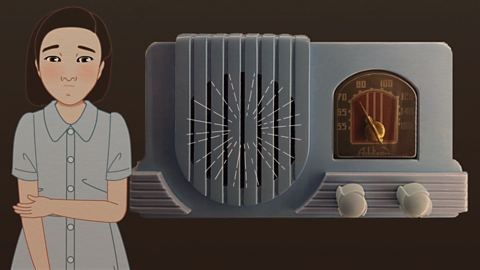
- count7 of 10
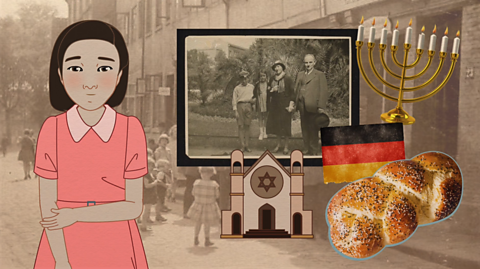
- count8 of 10

- count9 of 10
